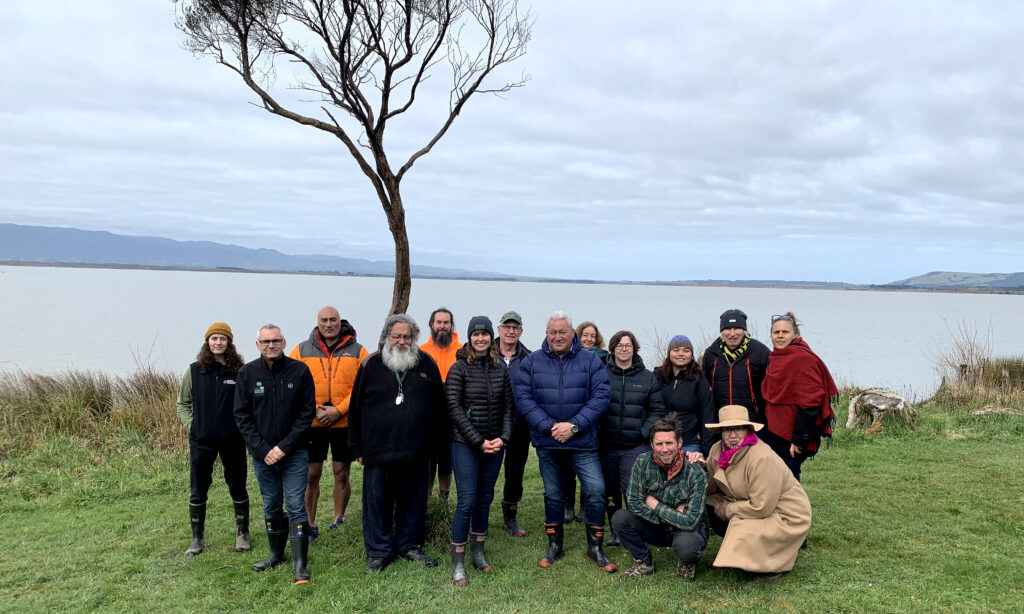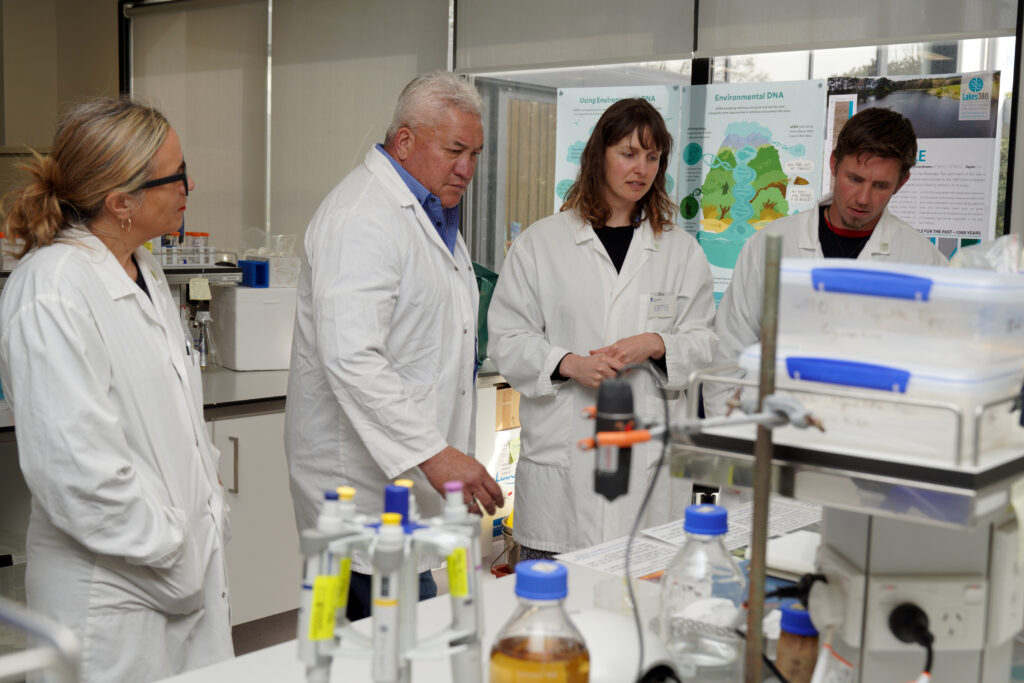Ngāti Kahungunu ki Wairarapa launch environmental project for Lake Wairarapa
30 August 2023
A new environmental project that aims to understand both the current day and historical health and biodiversity of Lake Wairarapa was launched last week. The Ngāti Kahungunu ki Wairarapa-led initiative, called Te Raranga Māramatanga me Ngā Tipu, will involve kairangahau (Maori researchers) and freshwater scientists from Nelson’s Cawthron Institute and GNS Science in Lower Hutt.
Ra Smith, Kaiwhakahaere Taiao (Environmental Manager) for Kahungunu ki Wairarapa says the project will use a combination of scientific techniques and mātauranga Māori to gain a deeper understanding of current water quality and biodiversity and how the ecosystem has changed throughout history.
“Our goal is to restore the lake, but the question is, ‘to what?’ To answer that question, we approached scientists at Cawthron Institute and GNS Science who we’ve previously worked with through the national Lakes380 Programme to help us enrich our understanding.”
The Lakes380 Programme (2017-2022) assessed the health of Lake Ōnoke, Lake Pounui, Rototawai and Lake Nganoke by collecting and analysing lake sediments and water samples as part of a Wairarapa rohe (regional) study. Lake Wairarapa was not included at that time because the Programme prioritised lakes that were not routinely monitored.
“We now know some of the drivers of environmental degradation in lakes in the wider Wairarapa rohe and have a great picture of what they used to be like before human arrival.
“We want to have the same understanding of Lake Wairarapa that goes beyond water quality, starting with aquatic plants as they are a key component of lake ecosystems.”
Science leader Katie Brasell who works for Ngāti Kahungunu ki Wairarapa and the Cawthron Institute says this understanding will be informed by cutting edge techniques, including hyperspectral scanning of sediment cores which provides information on how water quality has changed, and environmental DNA analysis, which is used to explore the biodiversity with a focus on macrophytes (aquatic plants).
“Sediment cores are collected by taking long tubes of mud from the bottom of the lake. The layers of mud act like pages in a history book and provide a record of over 1000 years of the lake’s life.”
The analysis of sediment cores provides rich, time-stamped data including what animals, plants, algae, and insects were present in and around the lake in each period and how changes in land use and management practices around the lake might have impacted the water quality.
“One example of the kind of insight we have gained through core sampling of Ōnoke (Lake Ferry) is that post-European settlement there was widespread burning of beech and podocarp forest and you can see the layers of charcoal in the sediment core from that time period.”
Another important technique that Brasell will use is eDNA analysis of sediment cores.
“All living things leave traces of their DNA behind them in the environment, even long after they have died, and we can extract it from the samples we take and identify which species were present in the past and which are there today,” Brasell says.
“In Lake Pounui, eDNA analysis revealed that the introduction of perch and trout after European settlement had caused a big shift in the communities of bacteria that lived in the lake, indicating these fish are a major driver of the severe cyanobacterial blooms the lake now experiences most summers.”
For Ra Smith and Kahungunu ki Wairarapa, it is hoped that similar insight into the drivers of declining health in Lake Wairarapa will enable successful restoration.
“Our ultimate goal is to draw support for Lake Wairarapa to obtain its own tino rangatiratanga – or flourishing growth within its own ecosystem. If we help the lake to recover by restoring some of the aquatic plants it has lost, we support it to heal itself.”
– Visit Lakes380.com

Image: Cawthron Institute. A mihi whakatau was held at the shore of Lake Wairarapa last week with representatives from Ngāti Kahungunu, Cawthron Institute, GNS Science, Greater Wellington Regional Council, Wairarapa Moana Wetlands Project and the local community in attendance to celebrate the launch of ‘Te Raranga Māramatanga me Ngā Tipu’.

Image: Cawthron Institute. Ngāti Kahungunu representatives travelled to Nelson following the mihi whakatau to visit Cawthron Institute’s laboratories and understand more about the scientific research that will be enabled by the project.